

ShowCase is a series of features presenting exciting new work from designers representing all creative fields and all geographies.
We are accepting nominations for upcoming ShowCase features - if you would like to suggest a project, please send us a message.
We were interested in finding the marriage between system design, form, function and usability. Finding a way to foster innovation by giving engineers and artist an open platform on which to develop novel multitouch applications--something that has previously lacked.
Open-source design and the community or concept around it has traditionally been focused on software, but in recent years with studios like Nortd there is a push to open source design and hardware. People are engaging in the world of objects now the way people used to engage in code. The more studios that open source their design, the more chance there is for innovation. Someone has to be the first, so we thought why not?
Detailed photo of early prototyping test of brush and blog reactivity.
In 2007, we started exploring the intersections of multitouch design and product design. We saw a potential in the upcoming field of multitouch- Microsoft had the surface, Apple came out with the iPhone. The way humans started to interact with machines was changing.
Our first iteration of the system was CUBIT, it was designed to be open source, scalable self enclosed multitouch system. It was able to detect other CUBITs within its immediate environment. It was site specific and built low to the ground with the intention it would be used for children. We designed it to be lightweight so children could use it and carry it from room to room.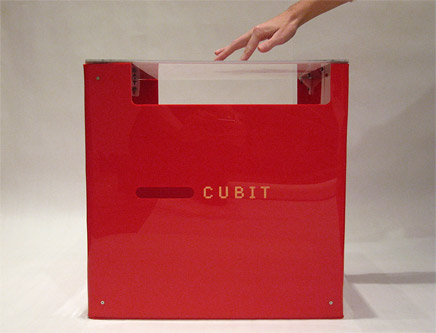
Cubits first working prototype
CUBIT was designed with the intention to redefine visual computing and depart from the mouse pointer paradigm. Fingers are seen as points of location, areas of contact, and vectors. Based on these sensory inputs the interface tries to generate graphical widgets that behave along preconceived human notions of physical objects.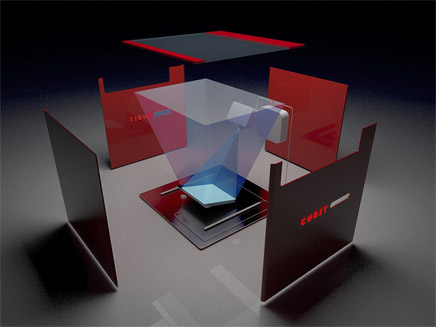
Exploded detail of interior hardware set up for the cubit system
From the early stages of prototyping and fabricating CUBIT we became interested in the concept of rapid implementation and commission based site-specific multitouch design. We felt CUBIT was too confining of a form factor for many of the projects we began working on and wanted something more modular.
TouchKit was developed as a second iteration for a starting point for site-specific implementation, with extremely flexible installation parameters and scaling options. We wanted to develop hardware that could be installed at multiple different angles and different implementation options to change the pieces sense of physical weight.
With the success of the Cubit and Touchkit, Nortd has started to develop the newest version of their multitouch system: The Zero. The Zero will be NOR_/D's most reactive and modular system to date. It will take the success of the self enclosed form factor of the Cubit and the modularity of the Touchkit into one self enclosed system.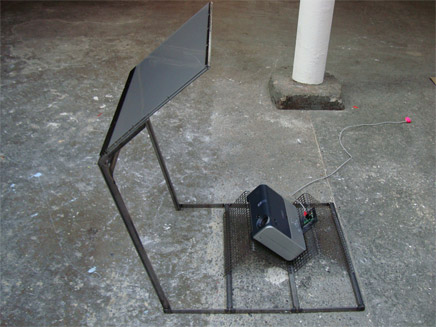
Touchkit set up to test open source design for simple screen stand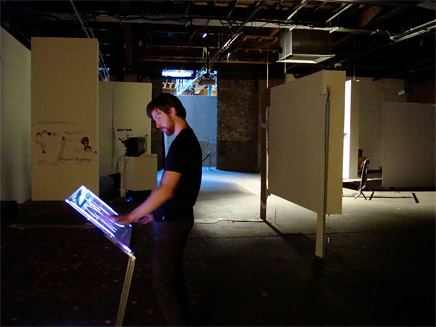
Touchkit installed for a recent gallery exhibition in New York City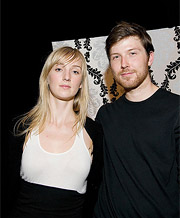
NOR_/D
NOR_/D generates work in the area of art, architecture and industrial design and is a collaboration of New York City artist Addie Wagenknecht and Austrian artist Stefan Hechenberger.
NOR_/D’s work spans from urban-environmental installations to software design and electrical engineering. The work tends to gravitate around topics of parametric architecture, tangible media, and motion design. NOR_/D has been internationally reviewed and exhibited as well as extensively covered by the international press.
Nortd is currently opening a second lab in Austria which will launch its newest multitouch design: The Zero, in 2009.
Wagenknecht and Hechenberger both hold Master’s from New York University’s Interactive Telecommunication Program and Addie is currently fellow at Eyebeam Atelier in Manhattan.
No Comments
Block this user
Are you sure you want to block this user and hide all related comments throughout the site?
Archinect
This is your first comment on Archinect. Your comment will be visible once approved.